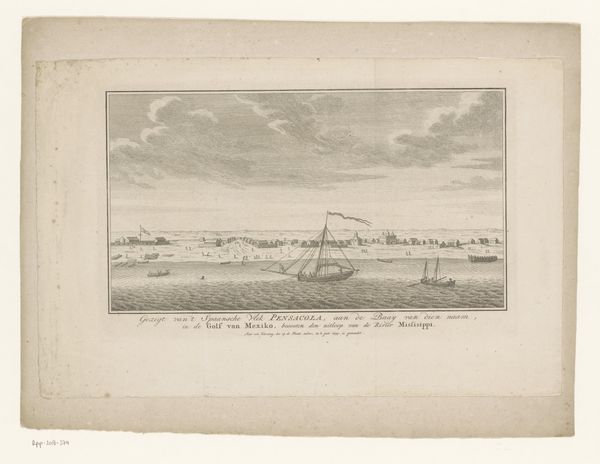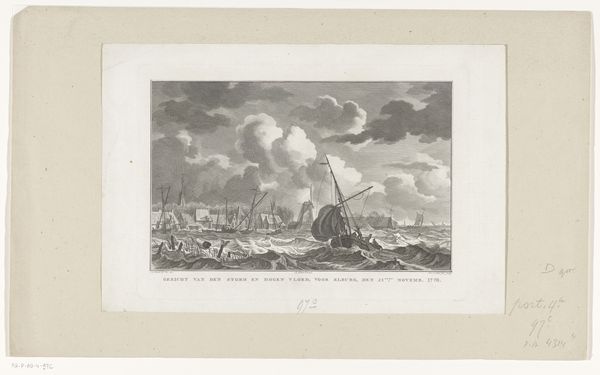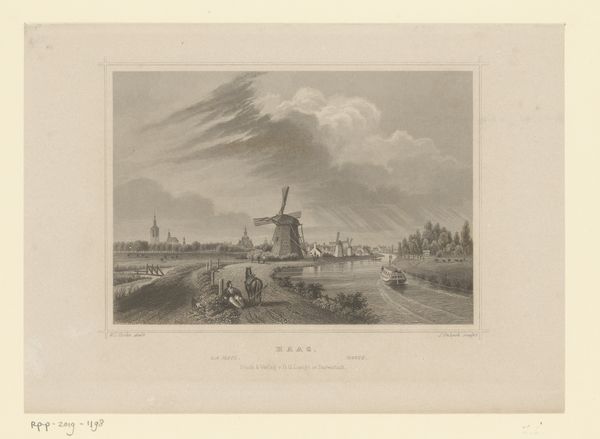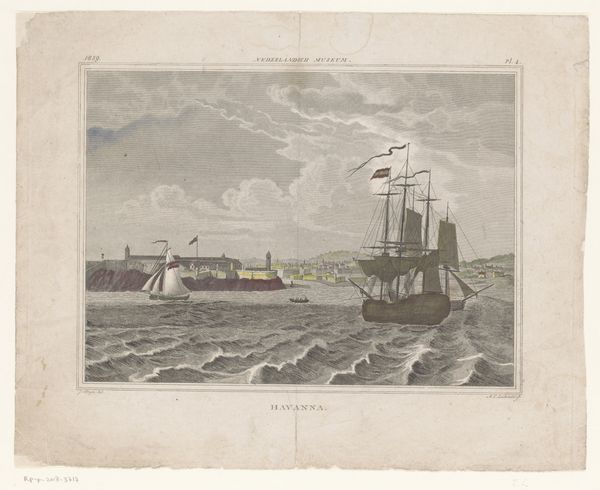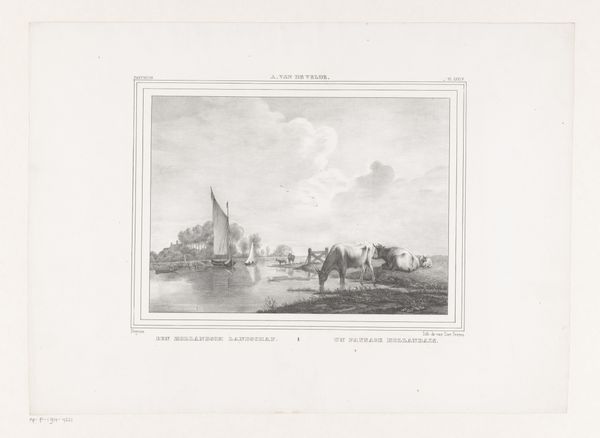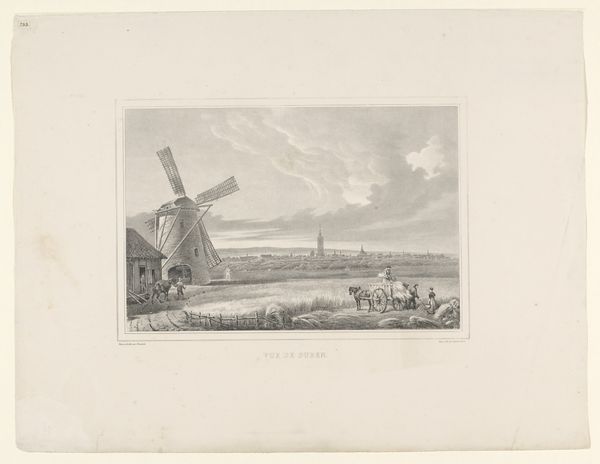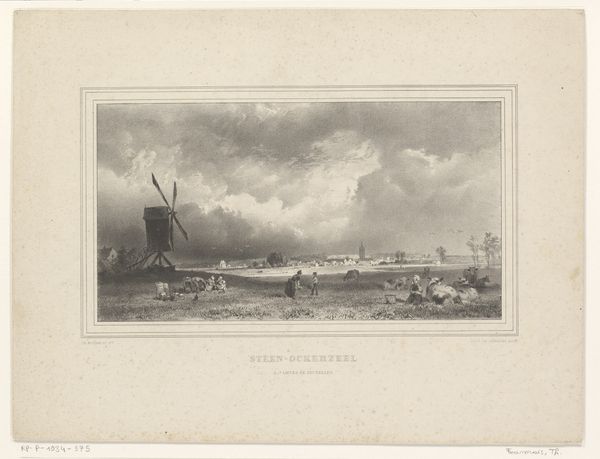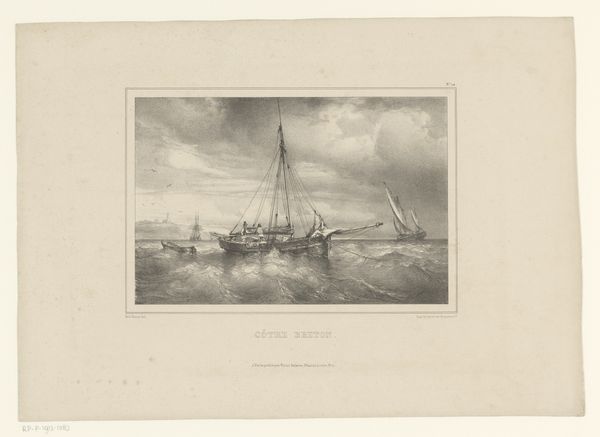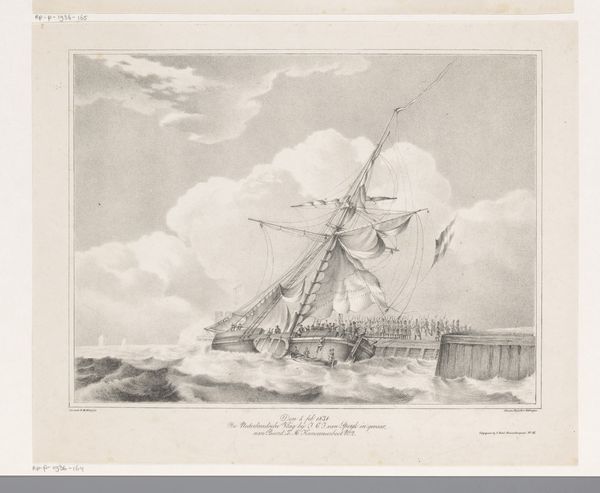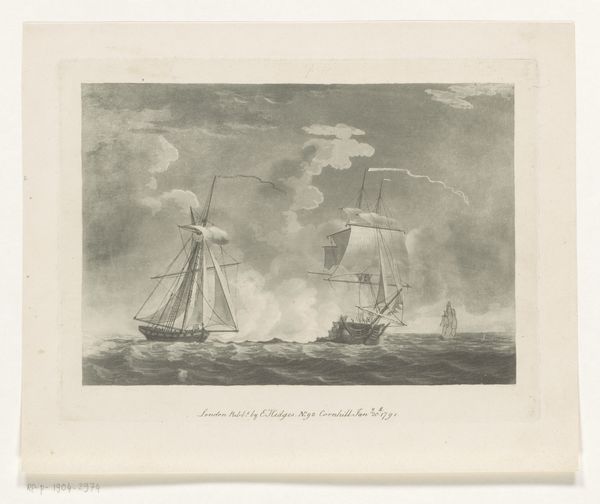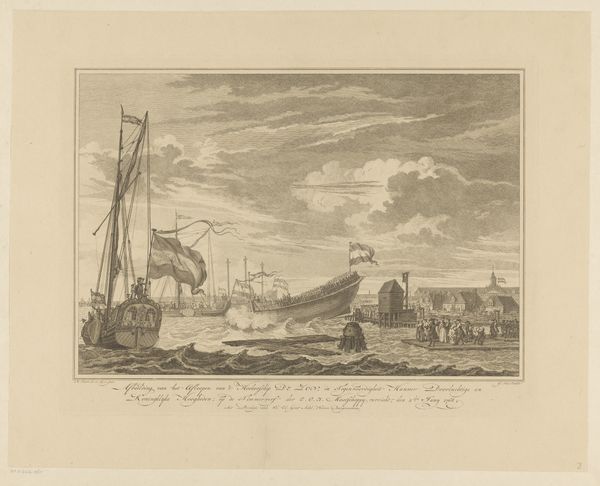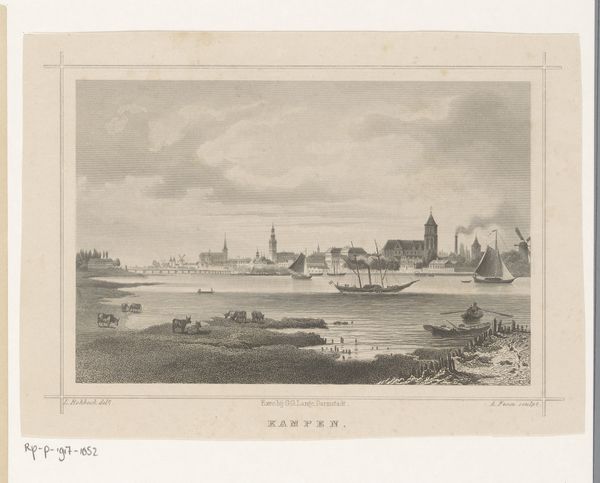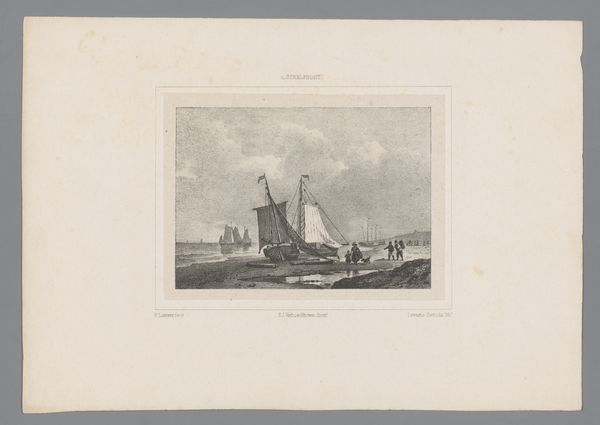
Dimensions: height 156 mm, width 233 mm
Copyright: Rijks Museum: Open Domain
Editor: This aquatint engraving from between 1828 and 1874, titled "Gezicht op de Sont" and created by an anonymous artist, is really evocative. The waves look so turbulent, almost overwhelming the ships. What stands out to you about this piece? Curator: What immediately strikes me is how this print, disseminated widely through the market, shaped public perception of maritime power. The imposing fortress in the background, juxtaposed with the vulnerability of the ships on those "turbulent" waves, speaks to the power dynamics inherent in controlling strategic waterways like the Øresund Strait, known as the Sont. Consider who this imagery served – mercantile interests? Nationalistic ambitions? Editor: That's interesting. I hadn't considered its political context, but now I see how the image can convey ideas about power and control. Was printmaking like this often used for that purpose? Curator: Precisely. Prints were a crucial medium for circulating political ideas and shaping public sentiment. How might the average citizen, who may have never seen the Sont, internalize these visual narratives about naval strength and national identity? What’s emphasized, and what’s left out? The romantic style, almost picturesque, soften its real intentions. Editor: So the "realism" is actually a construction? It's amazing to think about how an image could contribute to solidifying nationalistic ideas, and perhaps to policies and funding around maritime control at the time. It feels like the artist, or distributor, were making a clear, and strategic, statement! Curator: Exactly! The image becomes part of the historical fabric itself. Understanding its context helps us decode those layers. Editor: Thank you, I hadn't appreciated the role of art in shaping our view of history!
Comments
No comments
Be the first to comment and join the conversation on the ultimate creative platform.
